Abstract
Cell-free cyclization of delta-(L-alpha-aminoadipyl)-L-cysteinyl-D-valine to isopenicillin N by lytic enzyme extracts of Cephalosporium acremonium M-0198 was stimulated by ferrous ions. The optimum concentration of FeSO4 was 80 microM. No additional stimulation was observed with ascorbate, adenosine 5'-triphosphate, or alpha-ketoglutarate, but Triton X-100 and sonication of the extracts increased activity. ZnSO4 was very inhibitory to enzyme activity; CuSO4 was somewhat less inhibitory, and the least effective of the three was MnCl2. The dimer of the tripeptide was converted to a penicillin that has the biological spectrum of isopenicillin N, and this reaction was also stimulated by FeSO4. We found that sonication can be used directly to prepare extracts with cyclization activity from mycelia, without preparing protoplast lysates. The kinetics of cyclase appearance and disappearance during fermentation were similar to those of ring-expansion activity, i.e., enzyme appeared and peaked 13 h after growth ceased and then disappeared.
Full text
PDF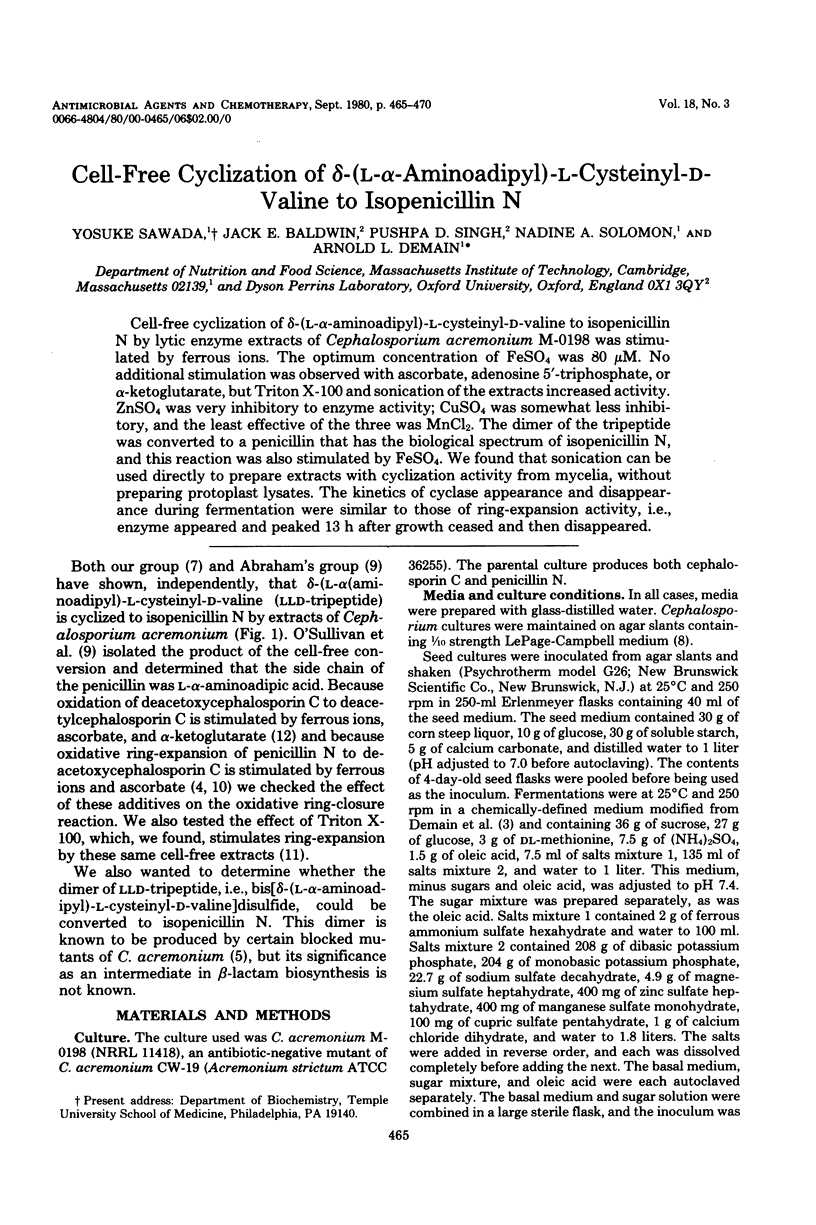
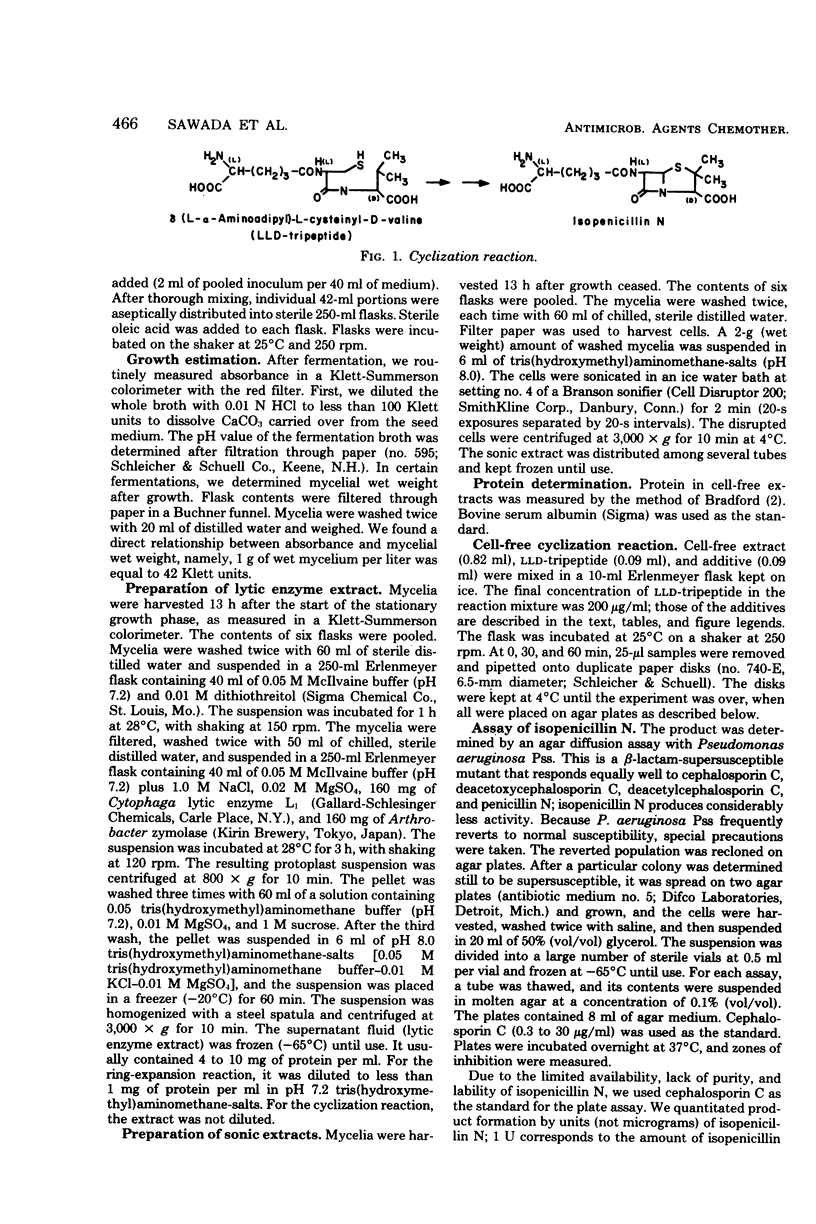
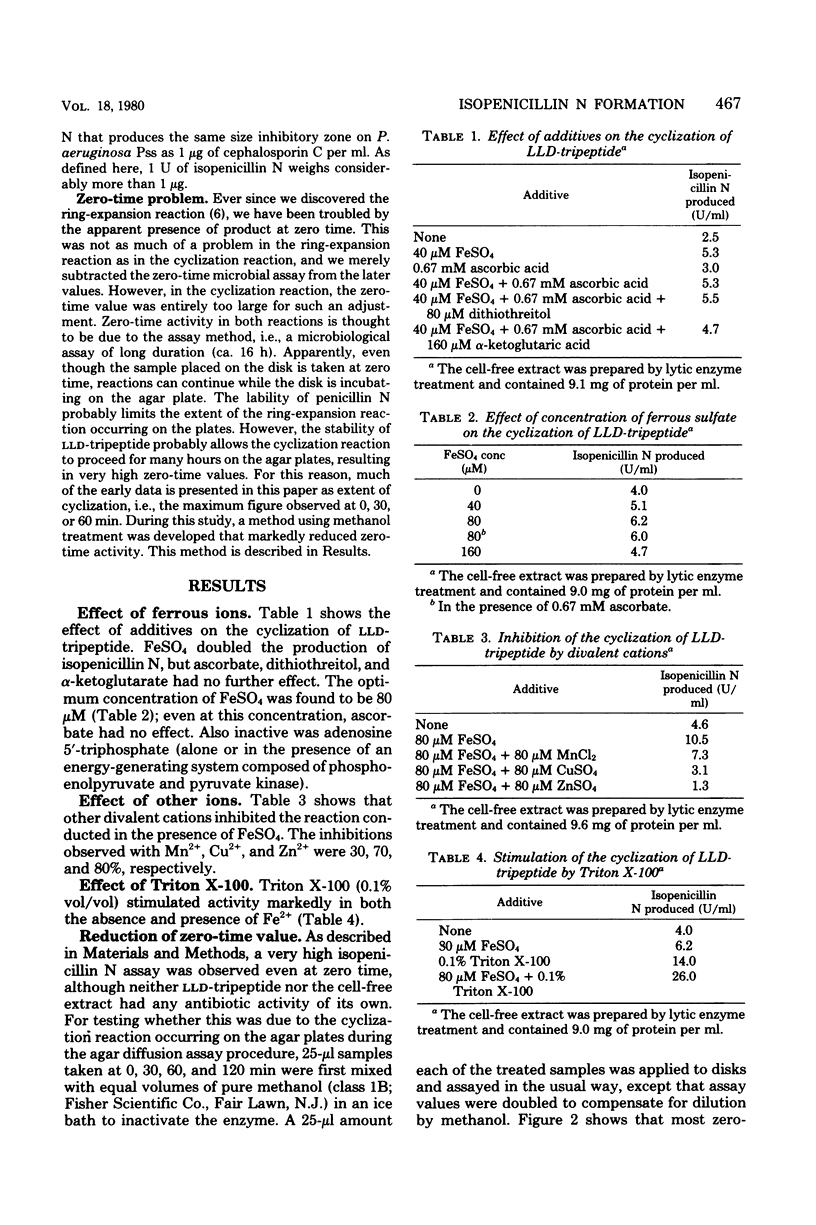
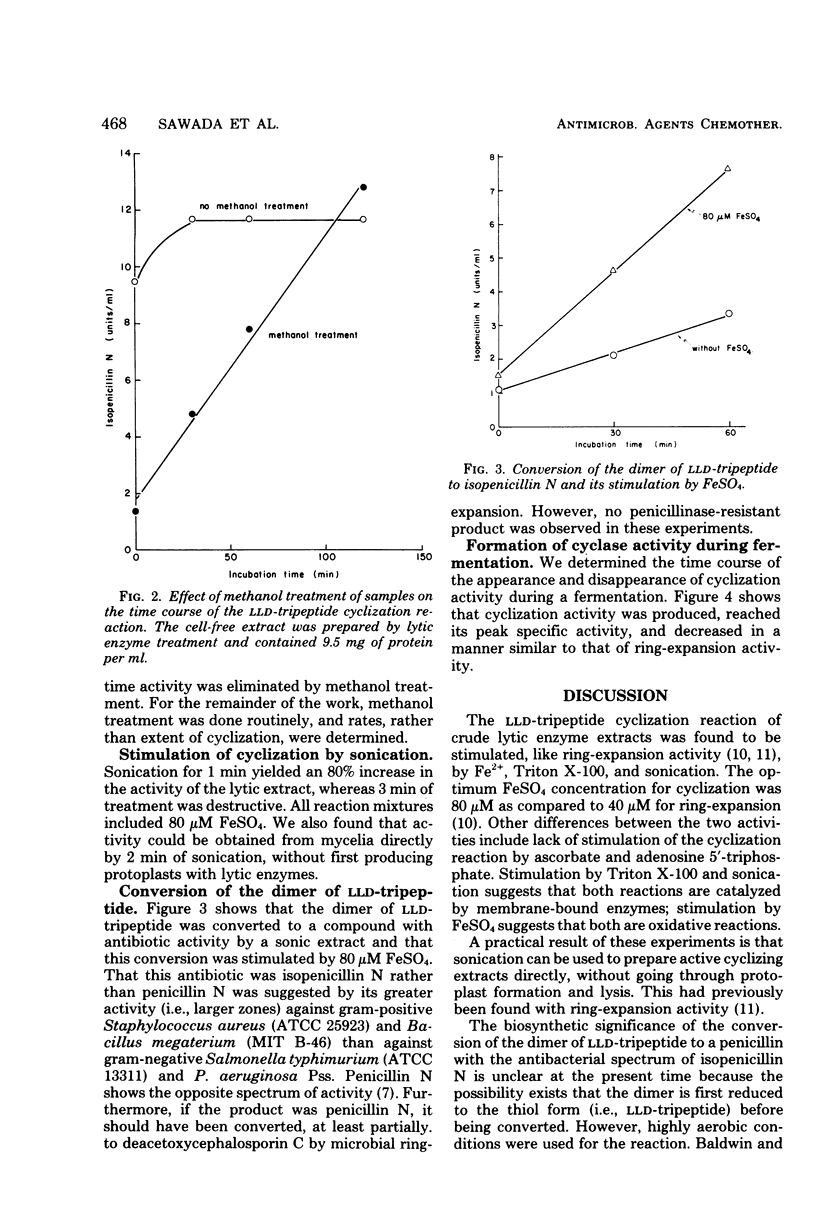
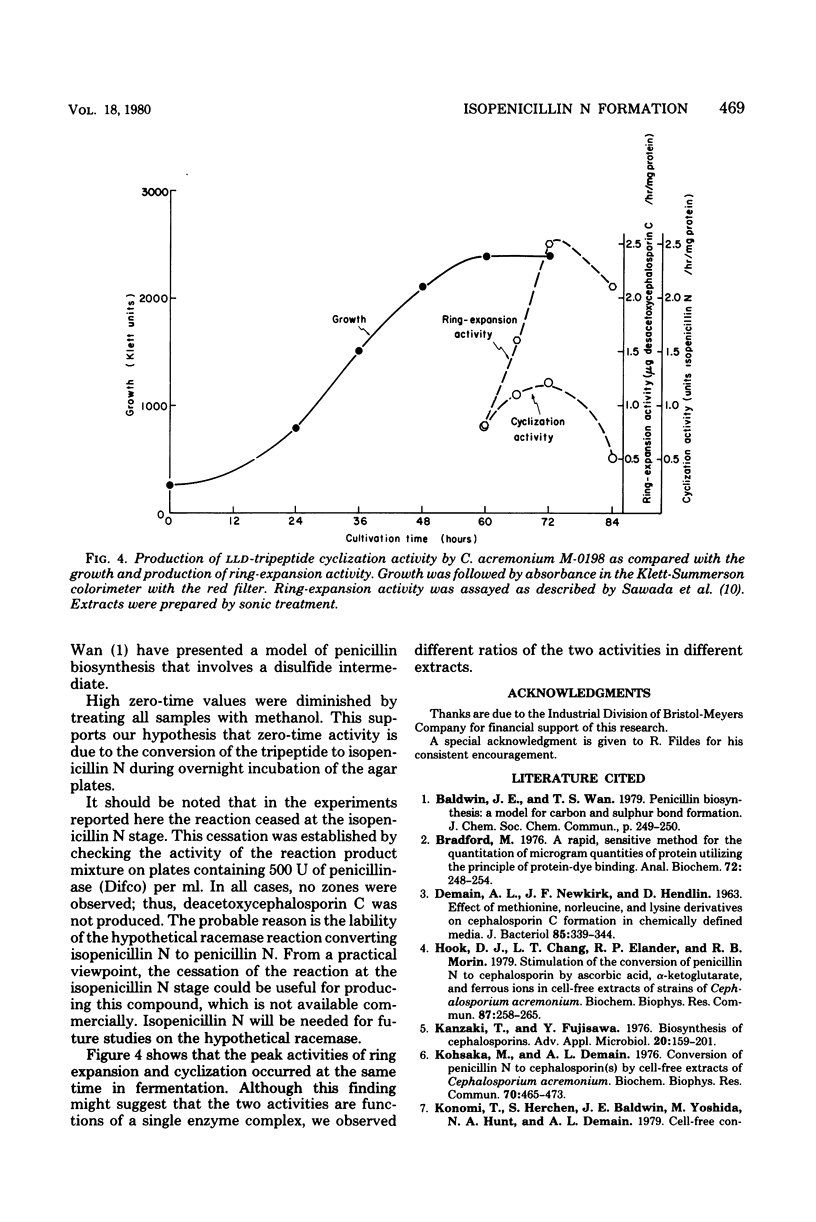
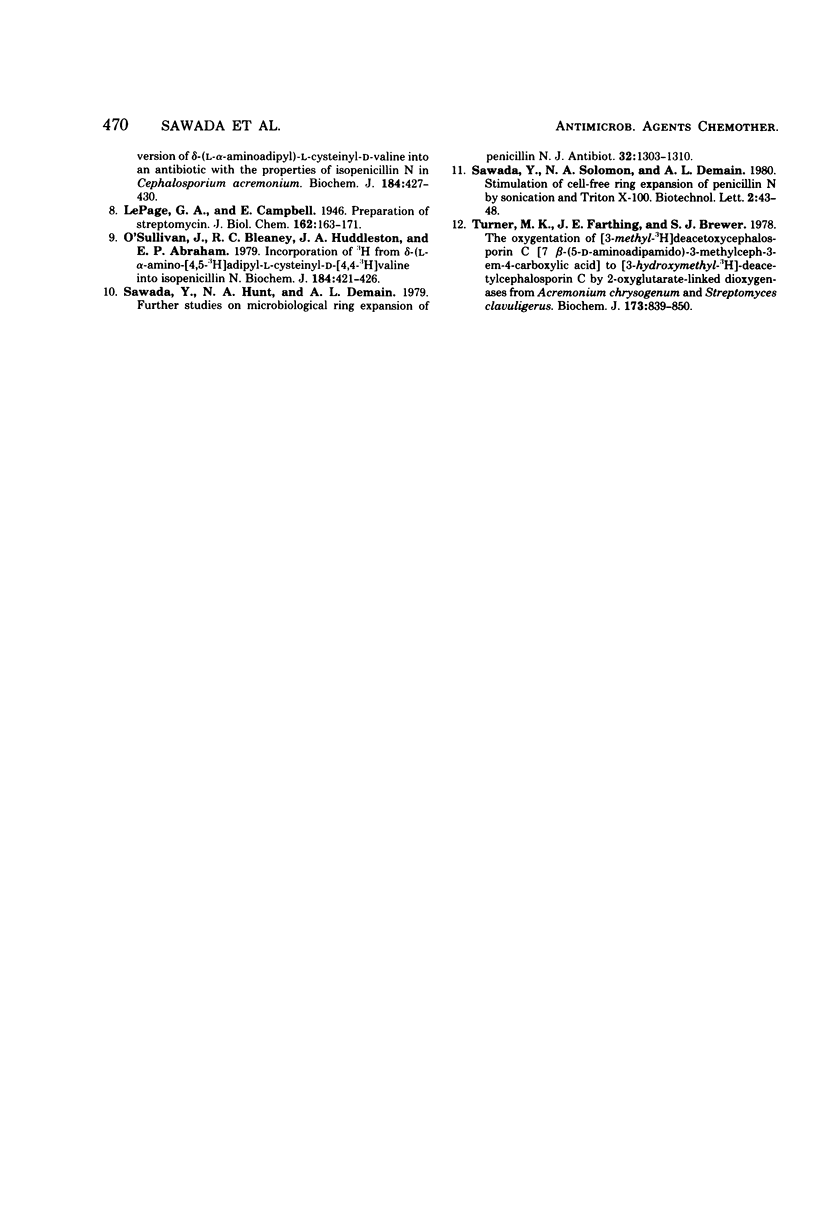
Selected References
These references are in PubMed. This may not be the complete list of references from this article.
- Bradford M. M. A rapid and sensitive method for the quantitation of microgram quantities of protein utilizing the principle of protein-dye binding. Anal Biochem. 1976 May 7;72:248–254. doi: 10.1006/abio.1976.9999. [DOI] [PubMed] [Google Scholar]
- DEMAIN A. L., NEWKIRK J. F., HENDLIN D. Effect of methionine, norleucine, and lysine derivatives on cephalosporin C formation in chemically defined media. J Bacteriol. 1963 Feb;85:339–344. doi: 10.1128/jb.85.2.339-344.1963. [DOI] [PMC free article] [PubMed] [Google Scholar]
- Hook D. J., Chang L. T., Elander R. P., Morin R. B. Stimulation of the conversion of penicillin N to cephalosporin by ascorbic acid, alpha-ketoglutarate, and ferrous ions in cell-free extracts of strains of Cephalosporium acremonium. Biochem Biophys Res Commun. 1979 Mar 15;87(1):258–265. doi: 10.1016/0006-291x(79)91674-7. [DOI] [PubMed] [Google Scholar]
- Kanzaki T., Fujisawa Y. Biosynthesis of cephalosporins. Adv Appl Microbiol. 1976;20:159–201. doi: 10.1016/s0065-2164(08)70112-6. [DOI] [PubMed] [Google Scholar]
- Kohsaka M., Demain A. L. Conversion of penicillin N to cephalosporin(s) by cell-free extracts of Cephalosporium acremonium. Biochem Biophys Res Commun. 1976 May 17;70(2):465–473. doi: 10.1016/0006-291x(76)91069-x. [DOI] [PubMed] [Google Scholar]
- O'Sullivan J., Bleaney R. C., Huddleston J. A., Abraham E. P. Incorporation of 3H from delta-(L-alpha-amino (4,5-3H)adipyl)-L-cysteinyl-D-(4,4-3H)valine into isopenicillin N. Biochem J. 1979 Nov 15;184(2):421–426. doi: 10.1042/bj1840421. [DOI] [PMC free article] [PubMed] [Google Scholar]
- Sawada Y., Hunt N. A., Demain A. L. Further studies on microbiological ring-expansion of penicillin N. J Antibiot (Tokyo) 1979 Dec;32(12):1303–1310. doi: 10.7164/antibiotics.32.1303. [DOI] [PubMed] [Google Scholar]
- Turner M. K., Farthing J. E., Brewer S. J. The oxygenation of [3-methyl-3H]desacetoxycephalosporin C [7beta-(5-D-aminadipamido)-3-methylceph-3-em-4-carboxylic acid] to [3-hydroxymethyl-3H]desacetylcephalosporin C by 2-oxoglutarate-linked dioxygenases from Acremonium chrysogenum and Streptomyces clavuligerus. Biochem J. 1978 Sep 1;173(3):839–850. doi: 10.1042/bj1730839. [DOI] [PMC free article] [PubMed] [Google Scholar]


